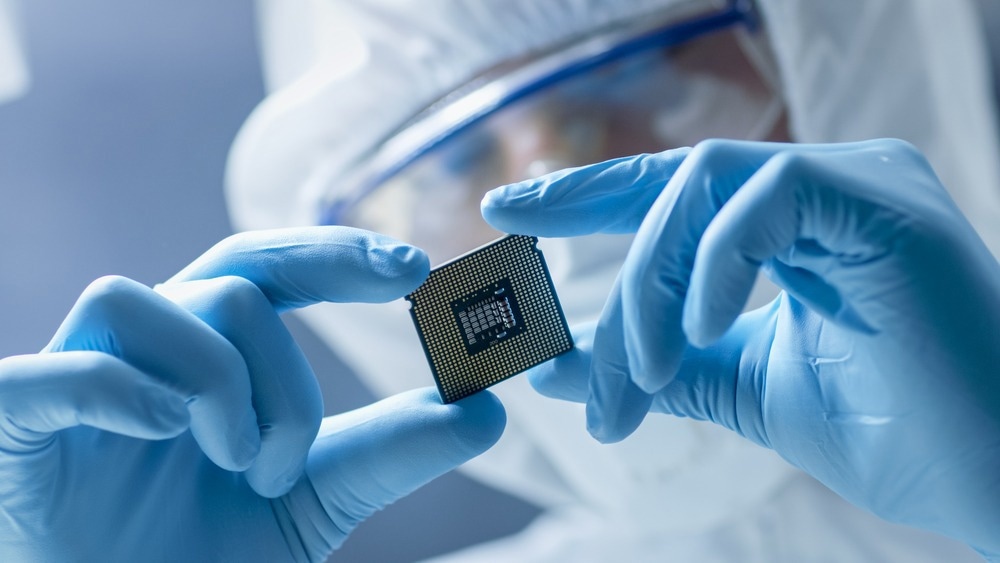Magnetization in ultrathin nanocrystals offers new avenues for research into novel physics and the development of next-generation flexible electronics. However, very few studies exist on developing a 2D magnetic semiconductor with Curie temperatures greater than ambient temperature.
 Study: Ultrathin ferrite nanosheets for room-temperature two-dimensional magnetic semiconductors. Image Credit: Gorodenkoff/Shutterstock.com
Study: Ultrathin ferrite nanosheets for room-temperature two-dimensional magnetic semiconductors. Image Credit: Gorodenkoff/Shutterstock.com
A recent study published in the journal Nature Communications focuses on the fabrication of air-stable semiconductive cobalt ferrite nanosheets with thicknesses as low as one unit cell through a simple chemical vapor deposition (CVD) technique.
Two-Dimensional (2D) Materials for Magnetic Applications
Due to their unique features, remarkable efficiency, and extremely thin thickness, two-dimensional (2D) materials, which span practically all electrical phases and functions in crystalline materials, have piqued the curiosity of many researchers. 2D magnetic order, linked with the substantial inherent spin fluctuations, can be found in atomic scale thin layers of several 2D materials.
Such materials pave the way for new possibilities, such as electromagnetic sensing and data storage. 2D ferromagnetic materials must have inherent magnetic states that are robust at or above ambient temperature for the creation of practical semiconductor systems. Magnetic sensors composed of iron oxides and multilayer chromium tellurides are indications of current advancement in this sector.
However, a room-temperature 2D magnetic semiconductor with an intriguing technical potential for spin filtration and magnetic computing has not been the focus of much research.
Cobalt Ferrite Nanosheets for a Novel 2D Magnetic Semiconductor
Unlike many ordinary 2D substances, the characteristics of intricate transition-metal oxides, such as high-temperature conductance and remarkable ferromagnetism, are dictated by a broad range of associated electronic states.
However, the antiferromagnetic structure with almost zero magnetism value, despite being greater than ambient temperature, severely restricts their practical applications.
On the other hand, the spinel (magnetite) group, another significant class of complex oxides, often shows very high ferromagnetic ordering temperatures, substantial net magnetism, and stable chemical characteristics. Cobalt ferrite nanosheets are distinct among spinel ferrites because of their large magnetic dispersion and maintained equilibrium state.
However, the production of desired non-van der Waals ultrathin intricate ferrite nanosheets is still in its early stages due to their chemically linked character, which prevents layer-by-layer abrasion and 2D anisotropic development. As a result, a simple and scalable method for producing a low-cost, room-temperature magnetic semiconductor is required for continued advancement in this sector.
Highlights of the Current Study
In this work, the researchers demonstrate that van der Waals linking may be used to create high-performance cobalt ferrite nanosheets as fine as a single unit cell for use in a novel 2D magnetic semiconductor.
Using van der Waals platforms and constrained circumstances allows strong linkages between overlayers and platforms to regulate crystal formation throughout the CVD method. This approach can also be used to create other spinel-type ferrite nanosheets.
Electrical experiments revealed that the cobalt ferrite nanosheets have a typical semiconducting character and a strong switchable activity, making them appropriate for application in producing a room-temperature magnetic semiconductor.
Vibrating sample magnetometry (VSM), magneto-optical Kerr effect (MOKE), and magnetic force microscopy (MFM) were used to illustrate the hard magnetic activity and in situ magnetic region development in cobalt ferrite nanosheets.
Important Findings of the Research
The researchers created unique cobalt ferrite nanosheets with a depth of one unit cell using a stable confined-van der Waals deposition technique and achieved a unique blend of room-temperature ferromagnetism characteristics for a magnetic semiconductor.
VSM, MFM, and MOKE analyses suggest that the resultant cobalt ferrite nanosheets have a Curie temperature of over 390 K and a significant dimensionality influence, making them excellent for use in a room-temperature magnetic semiconductor.
This presentation of inherent room-temperature magnetic properties in ultrathin ferrite nanosheets opens the door for developing novel quantum phenomena and device configurations. Also, it provides a new impetus to pursuing other magnetic crystallites that are missing from existing 2D materials.
Future Outlook
Like any novel layered structure, the lab-to-fab transfer of the novel magnetic semiconductor described in this work demands wafer-scale production and reproducible device fabrication. This work exhibits the capability of the van der Waals deposition technique in ultrathin ferrite nanosheets and shows that by modifying the growth conditions, it is possible to improve the coverage of ferrite nanosheets on the magnetic semiconductor.
Based on these results, it is expected that the development of a unique room-temperature 2D magnetic semiconductor would dramatically enhance the current 2D material choices and significantly broaden their application potential.
Reference
Cheng, R. et al. (2022). Ultrathin ferrite nanosheets for room-temperature two-dimensional magnetic semiconductors. Nature Communications. Available at: https://www.nature.com/articles/s41467-022-33017-1
Disclaimer: The views expressed here are those of the author expressed in their private capacity and do not necessarily represent the views of AZoM.com Limited T/A AZoNetwork the owner and operator of this website. This disclaimer forms part of the Terms and conditions of use of this website.